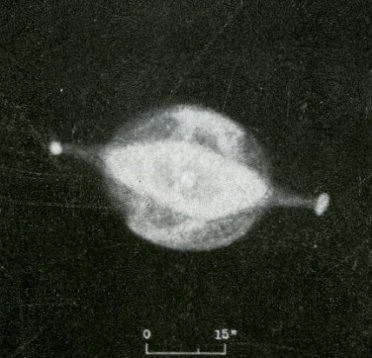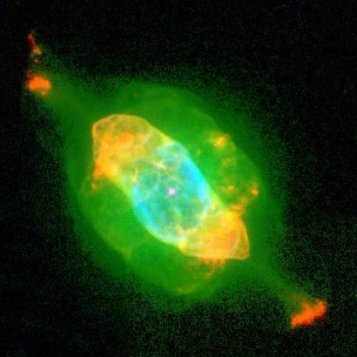

NGC 7009 displays a pair of jug-handle-like "ansae" that give it the name "The Saturn Nebula." On the left is a drawing made early in the twentieth century from a series of primitive photographs, the gaseous nebula perhaps appearing as its discoverer William Herschel may have seen it. On the right is a Hubble Space Telescope image made 80 years later, showing the vast improvement in astronomical imagery as well as the immense complexity of the nebula. The hot (90,000 Kelvin), blue, 13th magnitude star at the center is the old nuclear-burning core of what was once an extended giant star, while the surrounding nebula is the inner part of the star's lost envelope that has been structured by the remaining star's hot wind. The distance is not known. If at 2000 light years, the nebula is 3/4 of a light year long. The 13th magnitude central star seems faint only because of its distance and because the vast majority of its radiation comes out as energetic ultraviolet light. In reality, the star is thousands of times more luminous than the Sun. It will eventually fade to become one of the many white dwarfs that dot the cosmos. Left: Studies of the Nebulae, Lick Observatory Publications, vol XIII, 1918. Right: B. Balick, J. Alexander (U. Wash.), A. Hajian (USNO), Y. Terzian (Cornell U.), M. Perinotto (U. Florence), P. Patriarchy (Arcetry Obs.), and NASA.